#Timon of Athens
Text
Here's THE masterpost of free and full adaptations, by which I mean that it's a post made by the master.
Anthony and Cleopatra: here's the BBC version, here's a 2017 version.
As you like it: you'll find here an outdoor stage adaptation and here the BBC version. Here's Kenneth Brannagh's 2006 one.
Coriolanus: Here's a college play, here's the 1984 telefilm, here's the 2014 one with tom hiddleston. Here's the Ralph Fiennes 2011 one.
Cymbelline: Here's the 2014 one.
Hamlet: the 1948 Laurence Olivier one is here. The 1964 russian version is here and the 1964 american version is here. The 1964 Broadway production is here, the 1969 Williamson-Parfitt-Hopkins one is there, and the 1980 version is here. Here are part 1 and 2 of the 1990 BBC adaptation, the Kenneth Branagh 1996 Hamlet is here, the 2000 Ethan Hawke one is here. 2009 Tennant's here. And have the 2018 Almeida version here. On a sidenote, here's A Midwinter's Tale, about a man trying to make Hamlet. Andrew Scott's Hamlet is here.
Henry IV: part 1 and part 2 of the BBC 1989 version. And here's part 1 of a corwall school version.
Henry V: Laurence Olivier (who would have guessed) 1944 version. The 1989 Branagh version here. The BBC version is here.
Julius Caesar: here's the 1979 BBC adaptation, here the 1970 John Gielgud one. A theater Live from the late 2010's here.
King Lear: Laurence Olivier once again plays in here. And Gregory Kozintsev, who was I think in charge of the russian hamlet, has a king lear here. The 1975 BBC version is here. The Royal Shakespeare Compagny's 2008 version is here. The 1974 version with James Earl Jones is here. The 1953 Orson Wells one is here.
Macbeth: Here's the 1948 one, there the 1955 Joe McBeth. Here's the 1961 one with Sean Connery, and the 1966 BBC version is here. The 1969 radio one with Ian McKellen and Judi Dench is here, here's the 1971 by Roman Polanski, with spanish subtitles. The 1988 BBC one with portugese subtitles, and here the 2001 one). Here's Scotland, PA, the 2001 modern retelling. Rave Macbeth for anyone interested is here. And 2017 brings you this.
Measure for Measure: BBC version here. Hugo Weaving here.
The Merchant of Venice: here's a stage version, here's the 1980 movie, here the 1973 Lawrence Olivier movie, here's the 2004 movie with Al Pacino. The 2001 movie is here.
The Merry Wives of Windsor: the Royal Shakespeare Compagny gives you this movie.
A Midsummer Night's Dream: have this sponsored by the City of Columbia, and here the BBC version. Have the 1986 Duncan-Jennings version here. 2019 Live Theater version? Have it here!
Much Ado About Nothing: Here is the kenneth branagh version and here the Tennant and Tate 2011 version. Here's the 1984 version.
Othello: A Massachussets Performance here, the 2001 movie her is the Orson Wells movie with portuguese subtitles theree, and a fifteen minutes long lego adaptation here. THen if you want more good ole reliable you've got the BBC version here and there.
Richard II: here is the BBC version. If you want a more meta approach, here's the commentary for the Tennant version. 1997 one here.
Richard III: here's the 1955 one with Laurence Olivier. The 1995 one with Ian McKellen is no longer available at the previous link but I found it HERE.
Romeo and Juliet: here's the 1988 BBC version. Here's a stage production. 1954 brings you this. The french musical with english subtitles is here!
The Taming of the Shrew: the 1980 BBC version here and the 1988 one is here, sorry for the prior confusion. The 1929 version here, some Ontario stuff here, and here is the 1967 one with Richard Burton and Elizabeth Taylor. This one is the Shakespeare Retold modern retelling.
The Tempest: the 1979 one is here, the 2010 is here. Here is the 1988 one. Theater Live did a show of it in the late 2010's too.
Timon of Athens: here is the 1981 movie with Jonathan Pryce,
Troilus and Cressida can be found here
Titus Andronicus: the 1999 movie with Anthony Hopkins here
Twelfth night: here for the BBC, here for the 1970 version with Alec Guinness, Joan Plowright and Ralph Richardson.
Two Gentlemen of Verona: have the 2018 one here. The BBC version is here.
The Winter's Tale: the BBC version is here
Please do contribute if you find more. This is far from exhaustive.
(also look up the original post from time to time for more plays)
#adaptations#macbeth#hamlet#king lear#twelfth night#much ado about nothing#henry iv#henry v#richard iii#julius caesar#timon of athens#troilus and cressida
55K notes
·
View notes
Text
Didn't have room for the "another play should count as a tragedy, and that one's my favorite" option on this one, gang. So if another play is your favorite tragedy... just suffer, I guess.
Shakespeare poll tag, for all the different genres!
#shakespeare#antony and cleopatra#coriolanus#hamlet#julius caesar#king lear#macbeth#othello#romeo and juliet#timon of athens#titus andronicus#troilus and cressida#shakespearepolls
184 notes
·
View notes
Text
I - X of shakespeare tarot lineart

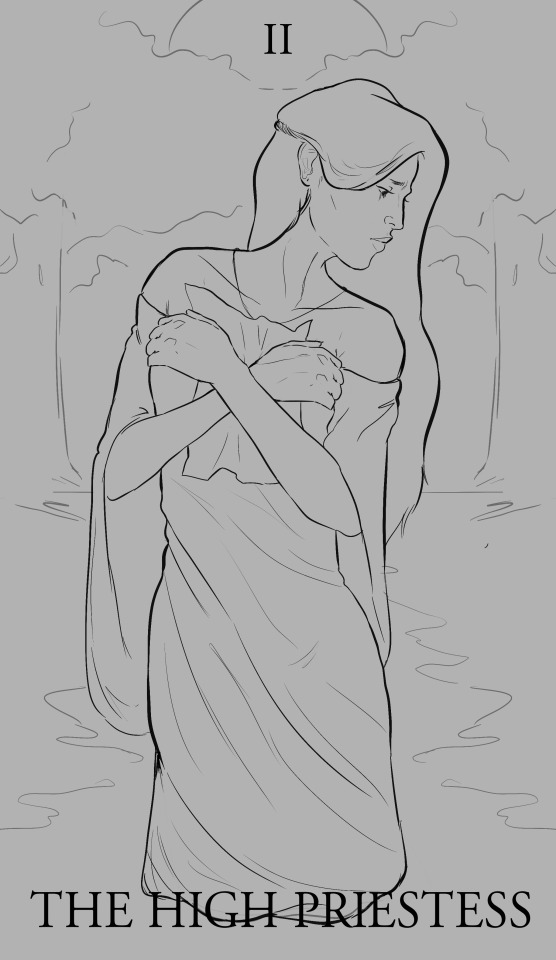

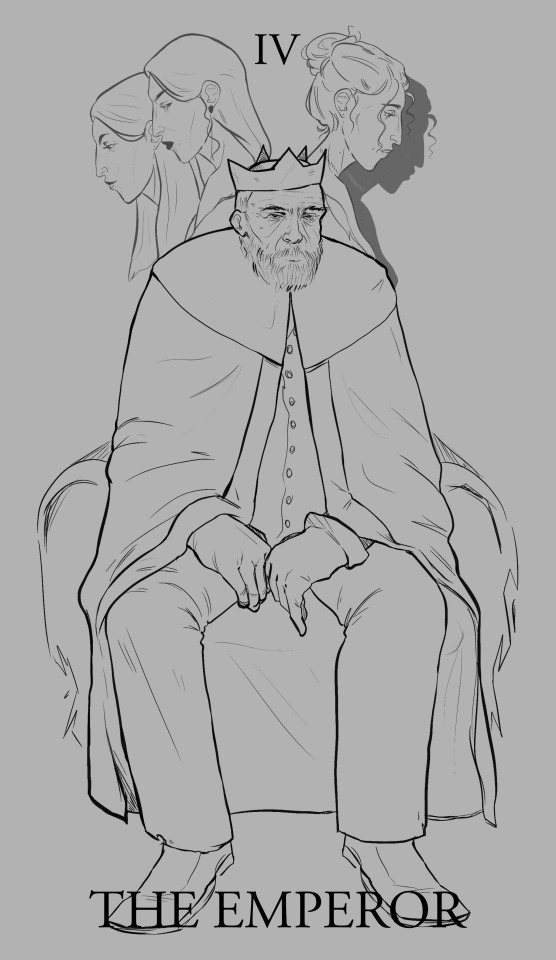

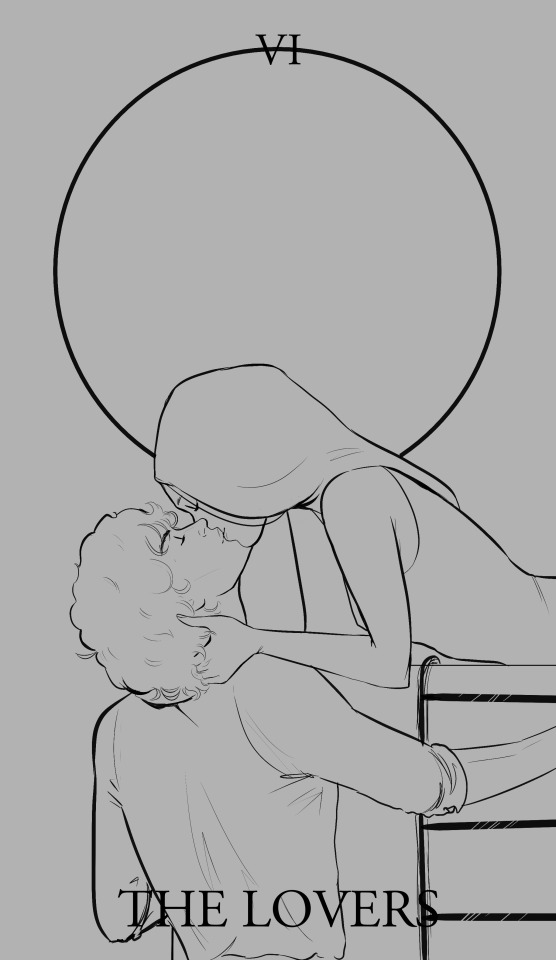



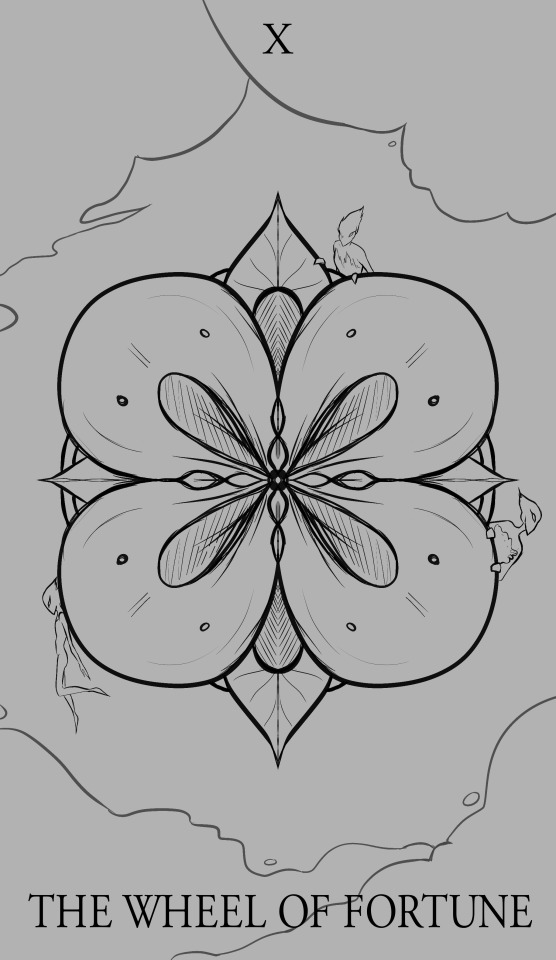
find xi - xxi here
some of these are in their ugly phase i know but im trying to have faith that they will end up looking good okay...
#also dont ask where the fool is hes a different matter entirely#shakespeare#shakespeare tarot#tempest#cymbeline#antony and cleopatra#king lear#measure for measure#romeo and juliet#love's labour's lost#coriolanus#timon of athens#midsummer night's dream#macbooth original
81 notes
·
View notes
Text
Shakespeare Weekend!

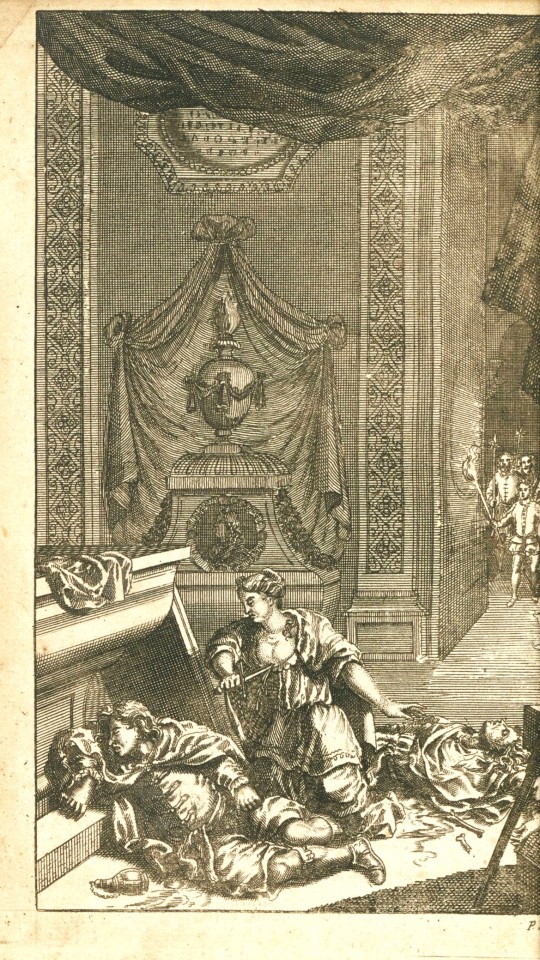



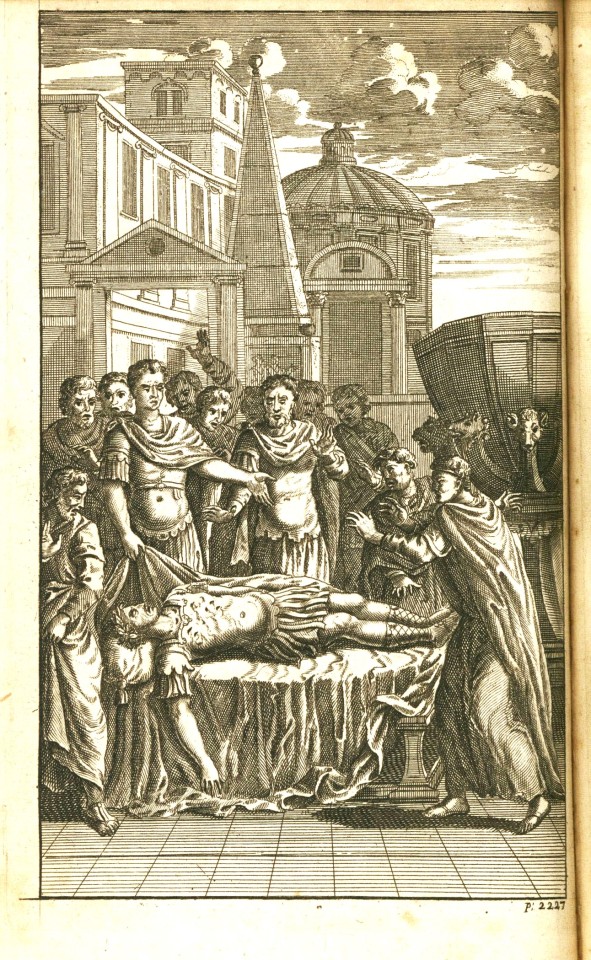









This weekend we come back to Nicholas Rowe’s (1674-1718) The Work of Mr. William Shakespear; in Six Volumes. Published in London in 1709 by Jacob Tonson (1655–1736), this second edition holds an important place within Shakespearean publication history. The Work of Mr. William Shakespear; in Six Volumes is recognized as the first octavo edition, the first illustrated edition, the first critically edited edition, and the first to present a biography of the poet.
Volume five contains Shakespeare’s renowned tragedies beginning with everyone’s favorite young Italian lovers, Romeo and Juliet. Following Romeo and Juliet is Timon of Athens, Julius Caesar, Macbeth, Hamlet Prince of Denmark, King Lear, and Othello. A full-page engraving by the French artist and book illustrator François Boitard (1670-1715) precedes each play. The illustrations were engraved by prolific English engraver Elisha Kirkall (c.1682–1742) who had previously worked with Rowe on his translation of Lucan's Pharsalia. Boitard’s illustrations often place readers at the pinnacle of the plays depicting high drama in his classic Baroque style.
In addition to Rowe’s editorial decisions to divide the plays into scenes and include notes on the entrances and exits of the players, he also normalised the spelling of names and included a dramatis personae preceding each play. The only chronicled critique of Rowe’s momentous editorial endeavor is his choice in basing his text on the corrupt Fourth Folio.
View more volumes of The Works of Mr. William Shakespear; in Six Volumes here.
View more Shakespeare Weekend posts.
-Jenna, Special Collections Graduate Intern
#shakespeare weekend#nicholas rowe#the work of mr. william shakespear#jacob tonson#francois boitard#elisha kirkall#romeo and juliet#timon of athens#julius caesar#macbeth#hamlet#king lear#othello
25 notes
·
View notes
Text
Shakes-Tourney, Round 1
(Timon summary is from shakespeare.org.uk, TNK summary is original; further summaries and propaganda encouraged)
Timon of Athens: Timon gets into major debt, gets mad when no one wants to cover him, and pays some person in the woods to destroy Athens.
Two Noble Kinsmen: Two cousins decide a love triangle is the best way to get their minds off of war and imprisonment. The object of their affection is confused. More drastically, so is the jailer's daughter.
7 notes
·
View notes
Text
Welcome to the second of our preliminary polls, Henry V vs. Timon of Athens! Does tumblr incline more to grand tales of war and iconic monologues or the story of a man discovering the horrors of capitalism and throwing rocks about it until he dies?
Check out the pinned post or the #bard poll tag on this blog to keep track of the bracket! And remember, keep any debate in the notes kind and civil. May the best play win!
43 notes
·
View notes
Text
Part 1
#polls#shakespeare#tragedies#troilus and cressida#timon of athens#titus andronicus#romeo and juliet#macbeth#othello
41 notes
·
View notes
Text
In my Shakespeare seminar today:
Prof: *concluding remarks* Timon is the only tragic protagonist who dies on his own terms. All the others are either stabbed or die similarly tragically…
*brief silence as everyone absorbs that*
Me: And on that note, happy Ides of March!
4 notes
·
View notes
Text

Howard Swain and Annette Bening starred in the 1983 Berkeley Shakespeare Festival production of “All’s Well That Ends Well” in John Hinkel Park. Photo by Bob Hsiang
---
Bening began her stage career in 1977 as a belly dancer in a production of Timon of Athens at San Diego’s Old Globe. In the early 1980s she moved to the Bay Area to study acting at ACT while auditioning for professional productions. During this period she starred in several Cal Shakes shows, playing Helena in All’s Well That Ends Well (1982), Charmian in Antony and Cleopatra (1982), Hermione in The Winter’s Tale (1982), Blanche of Spain in King John (1983), Rowena in Ivanhoe (1983), Juliet in Romeo and Juliet (1983), and, at the Bruns, Julia in The Two Gentlemen of Verona (1983).
#shakespeare#william shakespeare#anette bening#cal shakes#theater#theatre#belly dancing#timon of athens#helena#alls well
2 notes
·
View notes
Text
I have recently come to the conclusion that Alcibiades is the real Fair youth (joke).
- First of all Shakespeare describes the fair youth as so beautiful no one would possibly believe him, fairer than a summer’s day and all. Alcibiades was widely known as the most beautiful man in Athens, no matter how old he got. He is also well known, which is what immortality means in Shakespeare’s sonnets.
- The fair youth is described as feminine in Sonnet 20. Alcibiades wore dresses and was buried in one. He also had a dream of putting on make up, but Shakespeare said the fair youth is beautiful and feminine without it.
- The fair youth “steals men’s eyes and woman’s souls” (Sonnet 20). Alcibiades also attracted both men and woman, and was bisexual.
- Sonnet 20 also says that the fair youth was made for woman’s pleasure and men’s love. This can easily be applied to Alcibiades because he had a lot of sex with woman, but never with his lover Socrates, because Socrates was asexual.
- Socrates is the Rival poet who tempted Alcibiades away from all his other lovers, including Shakespeare, since Socrates was the only one to praise his inner beauty instead of the outer beauty.
- Alcibiades is a character in Shakespeare’s “Timon of Athens” and although he is mostly an unsympathetic character in history, he is portrayed as a good and helpful character by Shakespeare.
#Alcibiades#conspiracy theory#socrates x alcibiades#Timon of Athens#william shakespeare#fair youth#ancient greece#shitpost#tagamemnon#Shakespearen
20 notes
·
View notes
Text
we have 4 days to read 13 plays. we can do this i have faith in us. and by us i mean. me.
#still to go are#anthony & cleopatra#the henriad#merry wives#comedy of errors#measure for measure#richard iii#timon of athens#henry viii#the criteria i want at the end of this is to be able to give a basic plot summary of each play
3 notes
·
View notes
Text

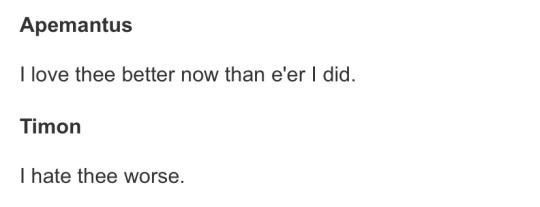


the shrine/an argument - fleet foxes // timon of athens - william shakespeare // icarus - the crane wives // featherweight - fleet foxes
#dark academia#light academia#literature#academia#shakespeare#books#the secret history#william shakespeare#timon of athens#apemantus#fleet foxes#the oh hellos#the crane wives#classiclit#chaotic academia
22 notes
·
View notes
Text
Shakespeare poll tag, for all the different genres!
#shakespeare#all's well that ends well#measure for measure#merchant of venice#timon of athens#troilus and cressida#winter's tale#shakespearepolls
94 notes
·
View notes
Text
i need the tarot girlies and the shakespeare girlies to combine real quick cause uh I’m planning a shakespeare tarot deck and I need opinions on the plays i’ve put down for major arcana. yes some are not there, either i do not care for them or i could not think of a design for them. cope.

#shakespeare#please help me i need to know#tarot deck#and yes im gonna tag all these plays i need opinions#henry v#the tempest#cymbeline#antony and cleopatra#king lear#measure for measure#romeo and juliet#love's labour's lost#troilus and cressida#timon of athens#midsummer night's dream#othello#much ado about nothing#twelfth night#as you like it#titus andronicus#julius caesar#winter's tale#macbeth#comedy of errors#hamlet#pericles#shakespeare tarot
174 notes
·
View notes
Text
Shakespeare Weekend

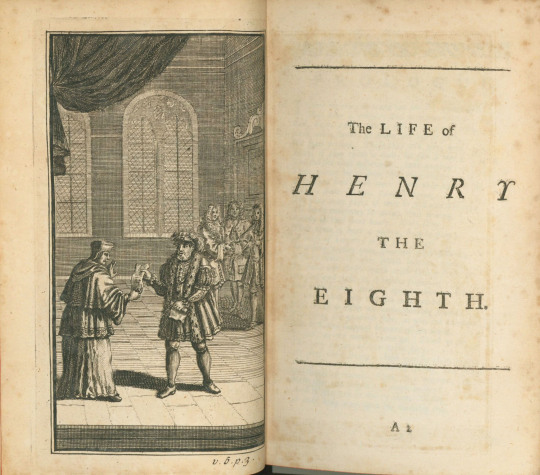

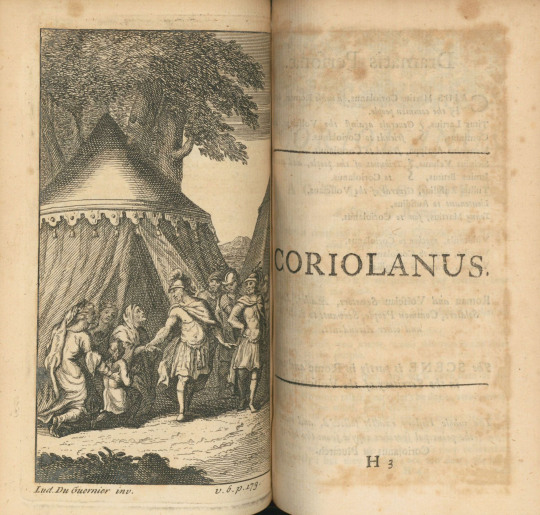

Continuing our synopsis of The works of Mr. William Shakespear: in ten volumes published in 1728 by Alexander Pope (1688-1744) and Dr. George Sewell (d. 1726) for Jacob Tonson (1655-1736), this weekend we look at Volume Six. The volume contains four plays that bounce thematically between historic and tragic, starting with Henry VIII. Based on the life of Henry VIII, the play was written in collaboration with John Fletcher (1579-1625) and is noted for having more stage directions than any other Shakespearean play.
Volume Six continues with Timon of Athens another collaboration written with Thomas Middleton (1580-1627), Coriolanus based on the life of the legendary Roman leader and one of the few Shakespearean plays to ever be banned in modern times, and Julius Caesar with its famous “Et tu? Brute!” popping up in Act 3 Scene 1.

Like Rowe’s earlier collection, scene divisions, stage directions, dramatis personae, and full-page engravings by either French artist Louis Du Guernier (1677-1716) or Englishman Paul Fourdrinier (1698-1758) precede each play.
Pope’s editions of Shakespeare were the first attempted to collate all previous publications. He consulted twenty-seven early quartos restoring passages that had been out of print for almost a century while simultaneously removing about 1,560 lines of material that didn’t appeal to him. Some of those lines were degraded to the bottom of the page with his other editorial notes.
View more Shakespeare Weekend posts.
-Jenna, Special Collections Graduate Intern
#shakespeare weekend#the works of mr. william shakespear in ten volumes#shakespeare#alexander pope#dr. george sewell#jacob tonson#henry viii#john fletcher#timon of athens#thomas middleton#coriolanus#julius caesar#nicholas rowe#louis du guernier#paul fourdrinier
15 notes
·
View notes
Photo

Timon of Athens by William Shakespeare. Design by Manuja Waldia.
3 notes
·
View notes